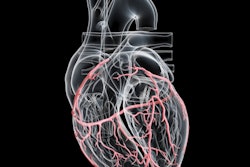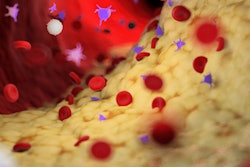
The use of coronary CT angiography (CCTA) to measure fatty tissue around arteries could help predict the risk of mortality from heart disease, according to research published online on 28 August in the Lancet and being presented at the European Society of Cardiology (ESC) congress in Munich.
In the Cardiovascular Risk Prediction Using Computed Tomography (CRISP-CT) study, researchers from the U.S., U.K., and Germany gathered CCTA data from 1,872 patients in Germany and 2,040 patients at the Cleveland Clinic.
They measured the patients' perivascular fat attenuation index -- a biomarker of coronary inflammation -- and found that levels exceeding -70 Hounsfield units (HU) in the right coronary artery and left anterior descending artery were associated with a statistically significant increase in risk of all-cause and cardiac mortality.
As an indicator of increased cardiac mortality, the perivascular fat attenuation index may help guide early targeted primary prevention and intensive secondary prevention in patients with coronary artery disease, senior author Dr. Charalambos Antoniades from the University of Oxford said in a press release.
"For the first time we have a set of biomarkers, derived from a routine test that is already used in everyday clinical practice, that measures what we call the 'residual cardiovascular risk,' currently missed by all risk scores and noninvasive tests," he said. "I expect these biomarkers to become an essential part of standard CT coronary angiography reporting in the coming years."
Antoniades and colleagues shared their findings on Tuesday at the ESC meeting.



















